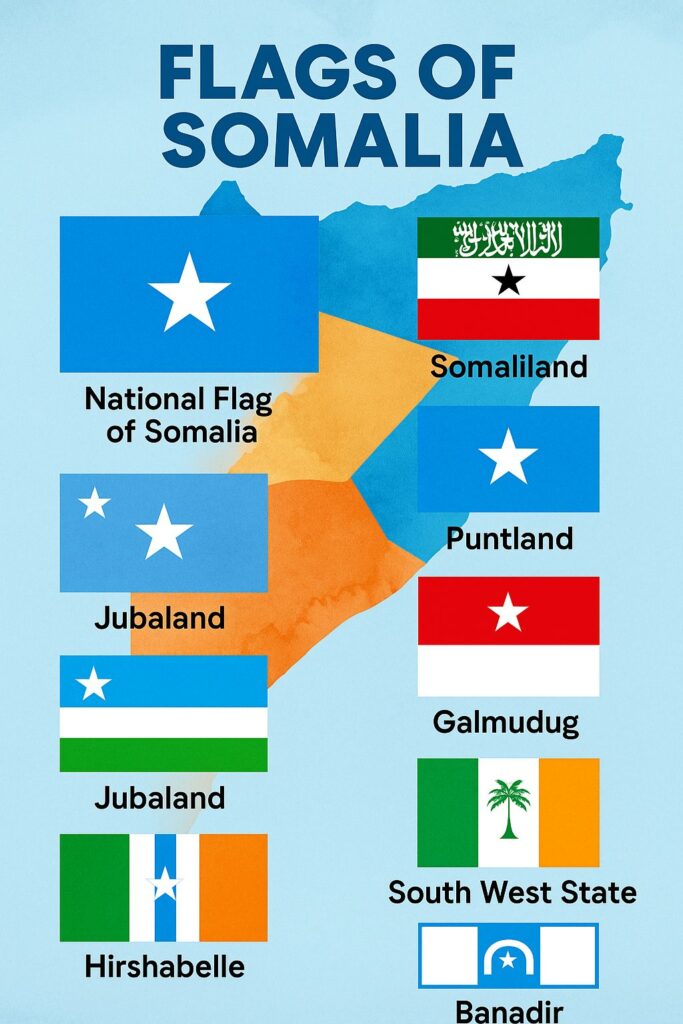To most outsiders, Somalia is recognized by a single sky-blue flag with a white star in the center — the national flag adopted in 1954.
But within the borders of this East African country, a far more complex picture emerges.
Somalia today is a federal republic with multiple states, each often flying its own regional flag.
So, how many flags does Somalia truly have, and why is the country divided?
The National Flag of Somalia
The national flag of Somalia was designed by Mohammed Awale Liban in 1954, symbolizing unity and independence.
The blue represents the United Nations — which helped Somalia transition from colonial rule.
While the white star with five points represents the five regions historically inhabited by ethnic Somalis:
- Italian Somaliland (South-Central Somalia)
- British Somaliland (Northwest)
- Djibouti
- Ogaden (in Ethiopia)
- Northern Frontier District (in Kenya)
Despite changes in the region, this flag remains a symbol of Somali identity and aspiration for unity.
Why Is Somalia Divided Into Federal States?
Following the collapse of Somalia’s central government in 1991, the country descended into civil war and clan-based conflicts.
To resolve decades of instability, the 2004 Transitional Federal Government (TFG) introduced a federal system, formalized in Somalia’s 2012 Provisional Constitution.
The idea was to give regions more autonomy, reduce clan conflict, and improve local governance.
Today, Somalia is made up of several federal member states, each with its own local government — and often, its own flag.
Flags of Somalia Federal States
Here is an overview of each federal member state and their respective flags:
1. Puntland State of Somalia (1998)
Location: Northeastern Somalia
Flag: Horizontal tricolor (blue, white, green) with a white star
Known for relative stability and self-governance, Puntland was the first region to establish autonomy, though it remains committed to Somali unity.
2. Jubaland (2013)
Location: Southern Somalia (Kismayo is the capital)
Flag: Blue field with white stripes and a white star on the left
Formed from reconciliation efforts in the south, Jubaland is rich in resources and strategically important due to the Kismayo port.
3. South West State (2014)
Location: Bay, Bakool, and Lower Shabelle regions
Flag: Features horizontal stripes and a central white star
Formed through the merger of two rival administrations, this state includes Baidoa and has played a crucial role in national reconciliation.
4. Galmudug (2015)
Location: Central Somalia
Flag: Light blue with a green triangle and white star
Created to bring peace to central Somalia, Galmudug continues to navigate local rivalries and national integration efforts.
5. Hirshabelle (2016)
Location: Hiran and Middle Shabelle regions
Flag: Blue and white, featuring a sun and green fields
The youngest federal member state, Hirshabelle was established to unify regions along the Shabelle River.
What About Somaliland does it have the Same Flag of Somalia?
Somaliland is a self-declared independent state in northwestern Somalia.
It considers itself a separate country and has its own:
- Flag (green-white-red horizontal stripes with a black star and Islamic shahada)
- Government
- Currency
Although Somaliland declared independence in 1991, it has not been internationally recognized. However, it operates independently from the Federal Government in Mogadishu.
So, How Many Flags Are There?
In practical terms, Somalia currently has at least 6 distinct flags:
- National Flag of Somalia
- Puntland
- Jubaland
- South West State
- Galmudug
- Hirshabelle
And if you include Somaliland, the number rises to seven.
Final Thoughts: Unity in Diversity?
Somalia’s federal system is still evolving.
While multiple flags may seem to reflect division, they also represent efforts to bring governance closer to the people and recover from decades of conflict.
The hope remains that federalism will lead to unity, peace, and a stronger Somali nation.


